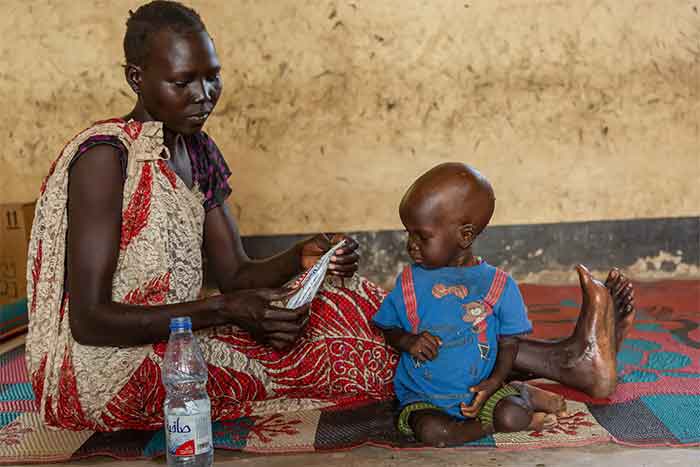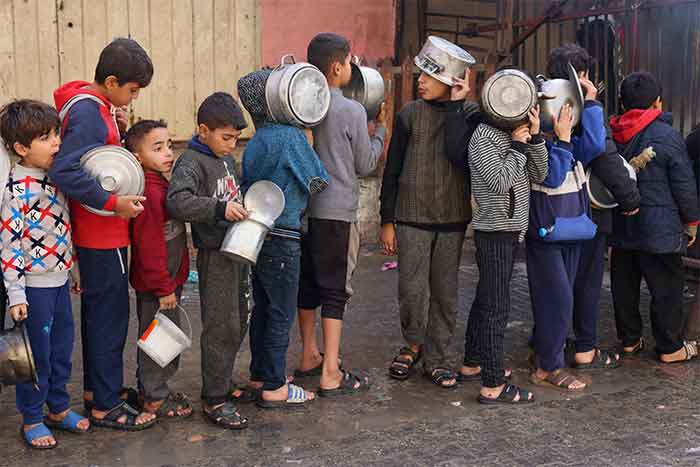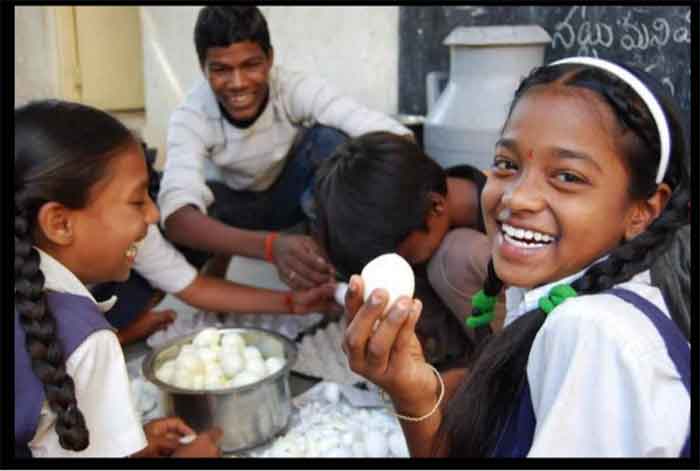World Food Program says that now needs are sky-high and resources are rock bottom

Possibilities of not just increase of hunger but even of starvation deaths have been voiced by several international agencies during the greater part of this year. This is particularly true for the Horn of Africa region where the situation has been reported to be the most serious, particularly in Somalia and Ethiopia (including Tigray), where rains have failed for the fifth year running. With just two years rain failure, in year 2010-11, as many as 260,000 people had perished in Somalia. In this third such crisis within a decade, there is hence a lot of apprehension regarding Somalia.
In Tigray region of Ethiopia the situation was bad enough already, but after a huge oil ‘theft’ in September the World Food Program (WFP) stated that its ability to rush food to remote areas will be very adversely affected unless the scarce fuel was returned. Regarding some of the worst affected regions, the WFP and others had warned that the worst phase is likely to start in October and continue for next three months or so, or possibly longer. Well, we are already here.
The British Red Cross has stated very recently that nearly 146 million are affected by serious hunger in Africa alone. This agency mentioned 16.5 million affected people in Ethiopia, over 4 million in Kenya, over 7 million in Somalia, 19.5 million in Nigeria, over 8 million in the Sahel Region. Further it was stated that about half the crop has been lost in Niger and Kenya. The agency added that hunger is responsible for 45% of child deaths in Africa, to a greater or lesser extent. In some of the worst affected regions, the number of children dropping out of school increased by three times in just three months.
One of the less discussed side-effects of the Ukraine war is that it is likely to have aggravated the hunger crisis in many countries of Africa. Some of the countries more affected by hunger , like Somalia and the Democratic Republic of Congo ( DRC), had been getting substantial parts of their wheat imports from Russia and Ukraine, and to support its work in Africa the WFP had been procuring a significant part of grain from Ukraine. In addition fertilizer and edible oil imports of Africa may also suffer due to the war, not to mention the impacts of wider trade and supply disruptions.
In another recent report the WFP has mentioned 19 hunger hot spots. Apart from the countries mentioned above this report mentions some other countries of Africa including Sudan, South Sudan, Democratic Republic of Congo, Central African Republic and Zimbabwe. Outside of Africa, this report mentions three countries of South Asia ( Afghanistan, parts of Pakistan and Sri Lanka) as well as two countries of West Asia ( Syria and Yemen). In addition this report lists some countries of South and Central America including Haiti, Honduras and Guatemala.
In many of these countries the current crisis is reported to have been caused by prolonged droughts (in two countries also excessive floods) related to climate change. These conditions worsened further by the pandemic and related disruptions (some of them avoidable). Moreover numerous conflicts and wars ( entirely avoidable) have contributed much more over the years to aggravating the hunger problem in many countries, particularly in Afghanistan, Syria, Yemen and several countries of Africa.
In Africa this situation was made worse by the French, British and NATO intervention in Libya, leading to civil war conditions and harm to neighboring poorer countries whose migrant workers were earlier earning their livelihood in oil-rich Libya and sending remittances to home countries. After a long period of direct colonial plunder, in recent decades also promotion of their business interests by some of the most powerful countries in the world has contributed to civil strife as well as livelihood disruption in several African countries.
These are the causes of hunger which are widely recognized, but the ones which are frequently neglected relate to inequalities and the worsening of these inequalities by the increasing grip of big business interests on farm and food sector.
In the middle of all these and other persisting serious problems, it is important to emphasize the urgency of the hunger crisis as in the past neglect has proved just too costly, resulting in several hundred thousand avoidable deaths.
The World Commission on Environment and Development (WCED) stated in 1987, during the period October 1984-April 1987 “the drought triggered, environment-development crisis in Africa peaked, putting 35 million people at risk, killing perhaps a million…As the drought receded , some 19 million people continued to suffer famine.”
Earlier during the drought in the Sahel region during 1970-74 when famine claimed about a hundred thousand lives, the situation relating to failure of timely international realization of the tragic situation was even worse as during these four years of a prolonged drought, there was actually a net movement of food away from the region to more paying markets.
Hence there is a clear need for more and better realization of hunger and famine conditions at the right time.
A substantially stepped up relief and development effort is urgently needed with the cooperation of African governments and community organizations on the one hand and the international community on the other hand. The overall conditions for this at world level are not favorable just now as the attention is too concentrated on Ukraine, but nevertheless the best possible efforts should be made.
While the immediate concern has to be to ensure that food reaches those who are most seriously affected by hunger, feeding programs obviously cannot function in a vacuum. Unless these are accompanied by adequate local efforts for promoting sustainable and ecologically protective livelihoods, using low-cost, affordable, climate-resilient technologies based mostly on local resources to produce staple foods, the dependence on feeding programs will go on increasing as people go from one crisis to another crisis.
Unfortunately in recent years too many resources have been wasted on expensive, ecologically harmful and costly methods of increasing farm productivity which have not succeeded despite being subsidized heavily and promoted in a big way by big business interests, which appear sometimes in the garb of aid agencies as well as private philanthropic agencies of billionaires.
Even if production of some favored crop has increased, it has been achieved at the cost of hardier traditional crops, including various millets, which are better suited to withstand dry and adverse weather. These is need now for more respect for rich local biodiversity and traditional wisdom, which promoted in many fascinating ways the best use of scarce resources on the basis of a mutually protective relationship of settled farming and nomadic pastoral cultures. Such deeper understanding will no doubt contribute much to better understanding of present needs too.
There is increasing realization that farming and pastoralism have been harmed greatly due to the promotion of those priorities which are linked to narrow interests of big business and multinational companies. In this context the trends of colonial times have continued in several countries. When big land areas are cordoned off for agribusiness or mining or other big business interests including tourism, without considering the adverse impact of this on pastoral groups and small peasants or on the availability of staple foods, then this is bound to hinder adequate local production of staple foods as well as the access of common people to staple foods. Similarly the trend of promoting more expensive technologies and inputs among small farmers, for the sake of benefiting big agribusiness companies, leads to increasing indebtedness among farmers which in turn leads to increasing possibilities of farmers losing a part or all of their farmland.
Such trends must be resisted by following land reforms and social agro-ecology, combining concerns of equality, justice, sustainability and environment protection, with emphasis on promoting food production by small farmers.
On top of all this, however, there is overwhelming need for peace, conflict resolution and stability, as it is only in these conditions that sustainable and durable justice-based solutions for resolving the livelihood and food crisis in keeping with local needs and conditions can be found for all countries and regions.
To give an example of distorted priorities, the USA has provided one billion dollars for the hunger affected regions of Africa this year while by the end of this year its all kinds of help to Ukraine alone (by far the biggest component being weapons supply) is likely to come close to 100 billion dollars. The economic costs of the Ukraine war have been estimated to be around 1500 billion dollars. The military expenditure of the USA in a year is 800 billion dollars which can easily be reduced by half. The annual expenditure in the USA on alcoholic beverages alone is 253 billion dollars. The UK has publicized its aid to the Horn of Africa which this year amounts to around 50 million dollars (0.05 billion dollars). Japan has given 100 million dollars (0.1 billion dollars) for worst hunger affected areas of world, about half of what it pledged.
The World Food Program has stated in a recent note titled A Global Food Crisis that it urgently needs 24 billion dollars to reach out to over 150 million people worldwide who are affected by serious hunger. It has also stated that now when needs are reaching sky high, the resources have touched rock bottom.
Clearly what is happening in our world is a case of highly distorted priorities. We must correct our priorities so that causes like ending hunger in the most affected areas can be at the top of the world’s priority.
Bharat Dogra is Honorary Convener, Campaign to Save Earth Now. His recent books include A Day in 2071, Planet in Peril and Man over Machine.
















































